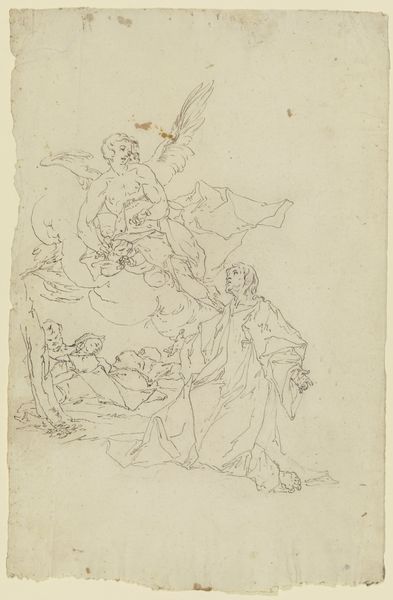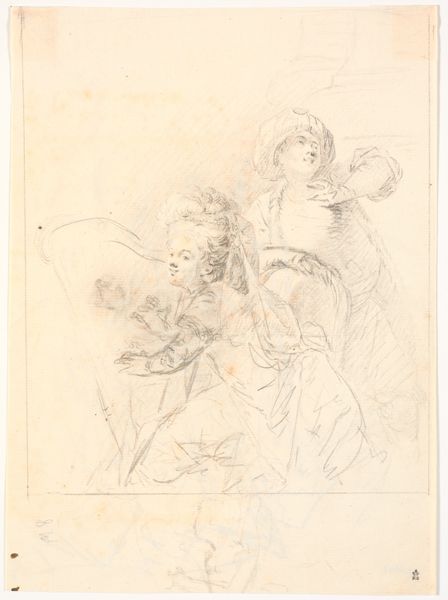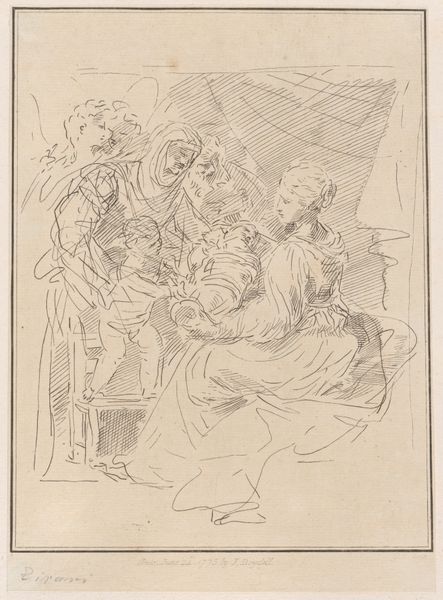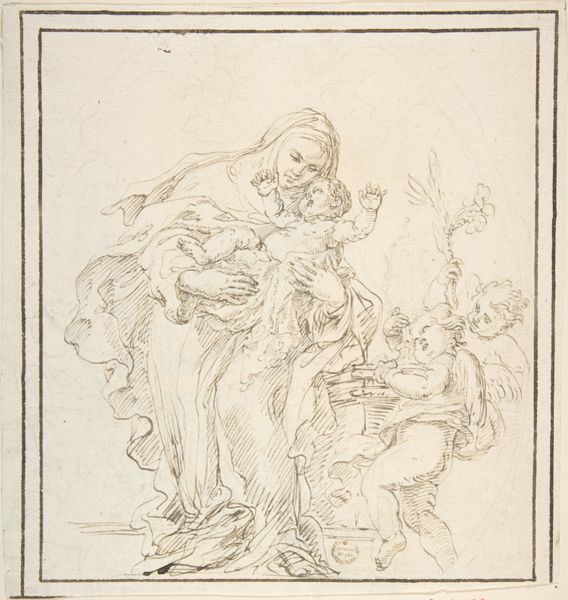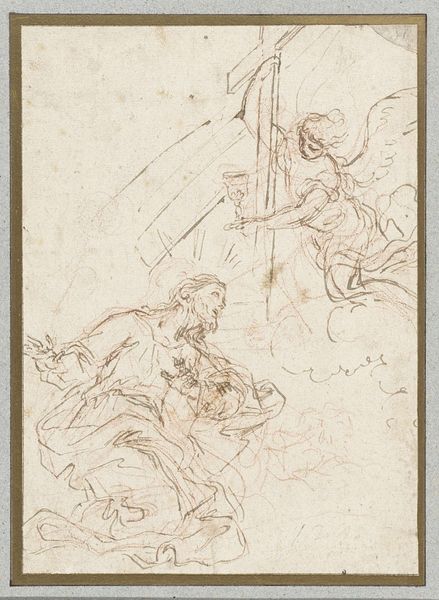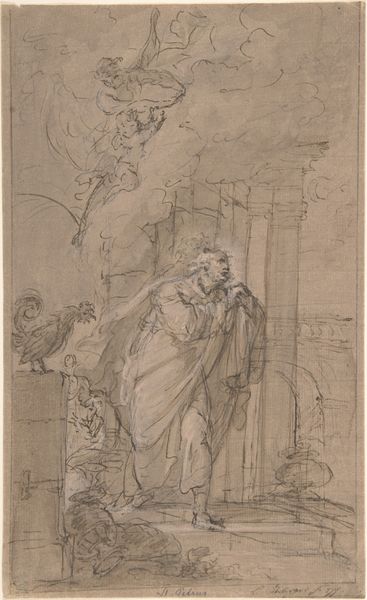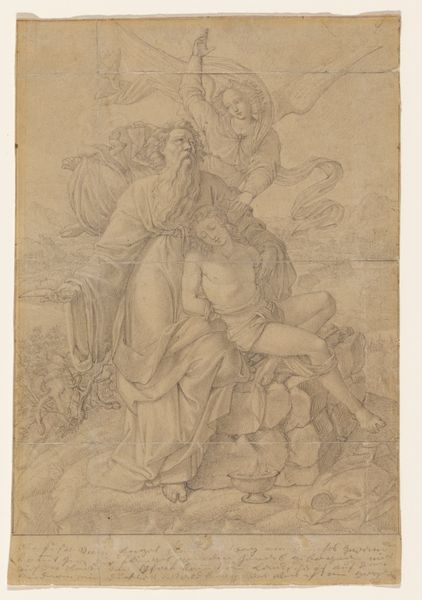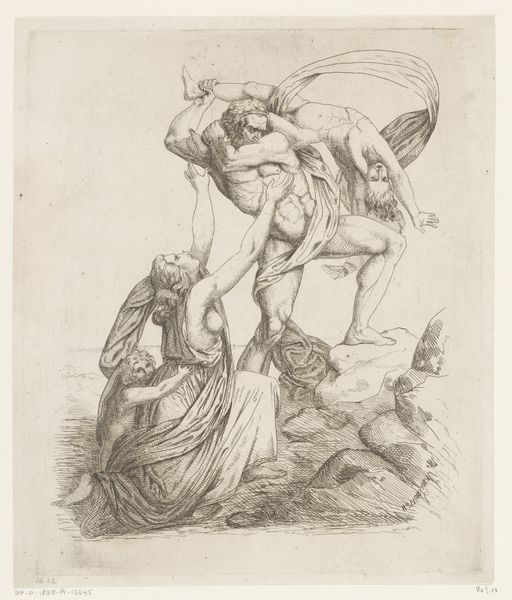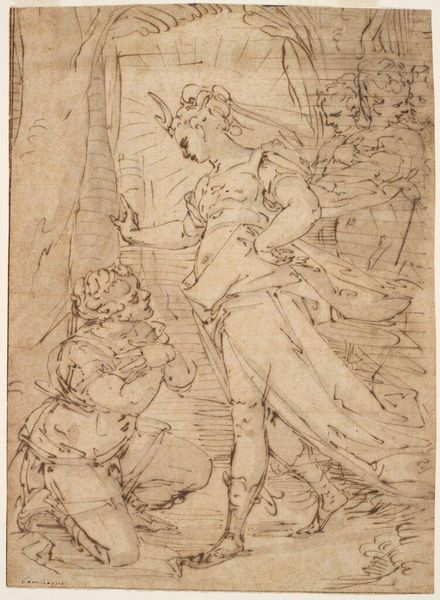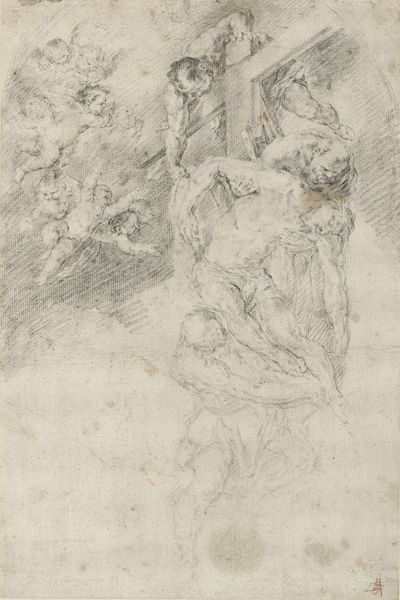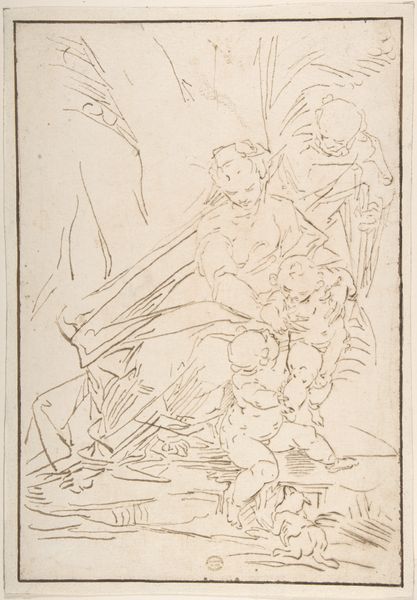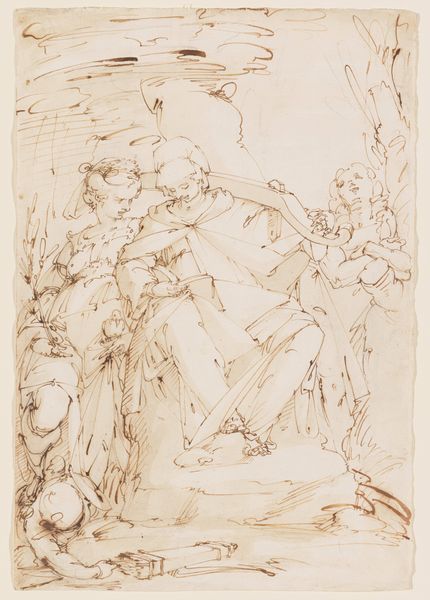
Left part of a lunette with two Sibyls carrying folios and gesticulating in agitation 1634 - 1689
0:00
0:00
drawing, pencil
#
drawing
#
baroque
#
figuration
#
pencil
Dimensions: 176 mm (height) x 148 mm (width) (bladmaal)
Editor: Here we have "Left part of a lunette with two Sibyls carrying folios and gesticulating in agitation," a pencil drawing by Ciro Ferri, created sometime between 1634 and 1689. The swirling drapery and dramatic gestures definitely give it a Baroque feel. What historical contexts are bubbling beneath the surface here? Curator: The drama is key. Think about the role of the Sibyls, figures from classical antiquity believed to possess prophetic abilities. Ferri places them within a visual tradition steeped in both pagan and Christian imagery. How might the church, or wealthy patrons, have used depictions of such figures? Editor: So, not just aesthetic appreciation, but also about wielding cultural power? To say, "we're connected to this ancient wisdom, which validates our authority?" Curator: Exactly! These drawings were often preparatory sketches for larger projects, commissioned to decorate churches or palaces. The grand scale reinforced that power, and that's important in considering its public role. Who would have been seeing these lunettes and what messages were the intended to take away? Editor: That makes sense. It is almost like they are a branding exercise, a symbol of legitimation by association. What’s striking, though, is the ‘agitation’ in the title. Does that hint at the turbulent political climate influencing the work? Curator: Good point. That’s definitely part of the picture. Consider the Counter-Reformation’s focus on emotional and dramatic religious experience. Those ‘gesticulations of agitation’ would resonate with viewers seeking spiritual awakening, guided and mediated, of course, by the church itself. The emotional charge adds a layer to the narrative. Editor: So, we're looking at art that reinforces social and religious institutions but maybe also provided a channel for displaying fervent emotion in line with the period? I never thought about drawings having quite such weight in the grand scheme of things. Curator: And the power dynamics operating underneath such supposedly simple things! It’s all deeply interconnected.
Comments
No comments
Be the first to comment and join the conversation on the ultimate creative platform.
